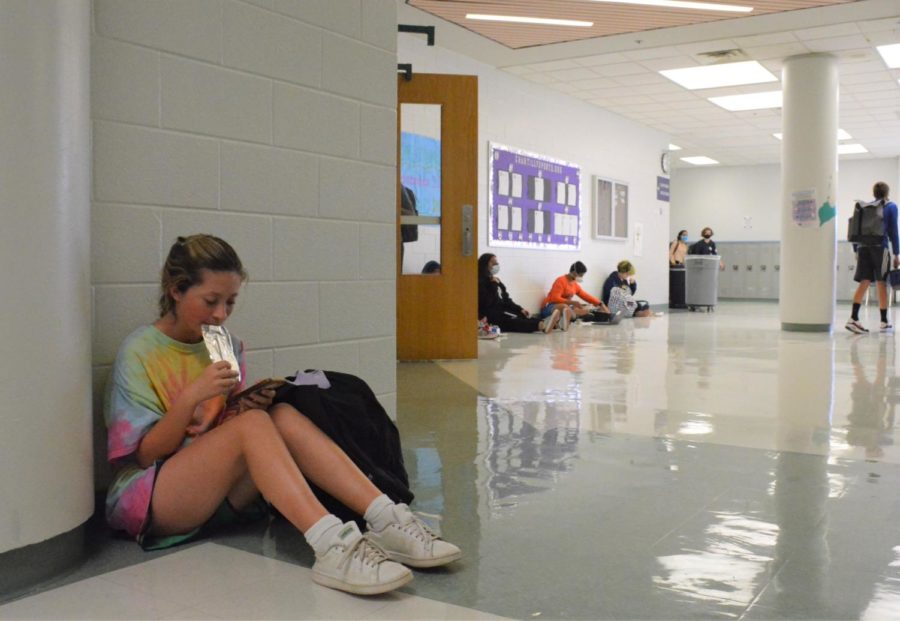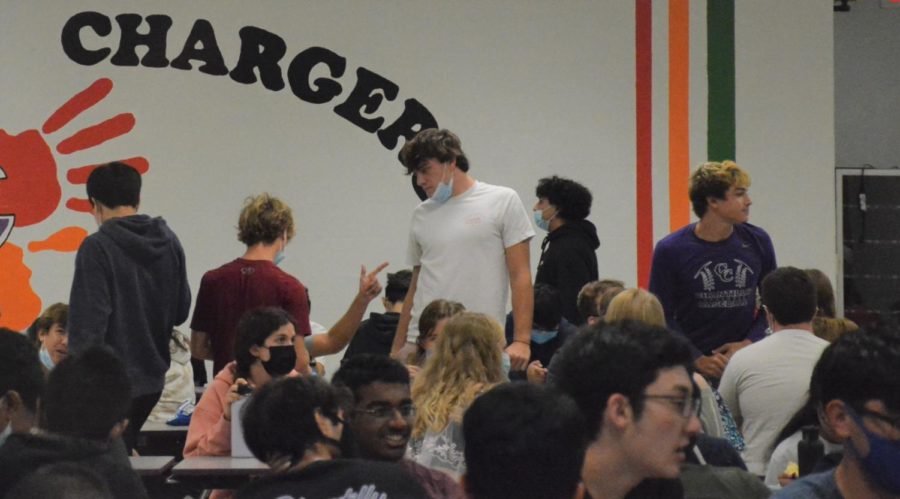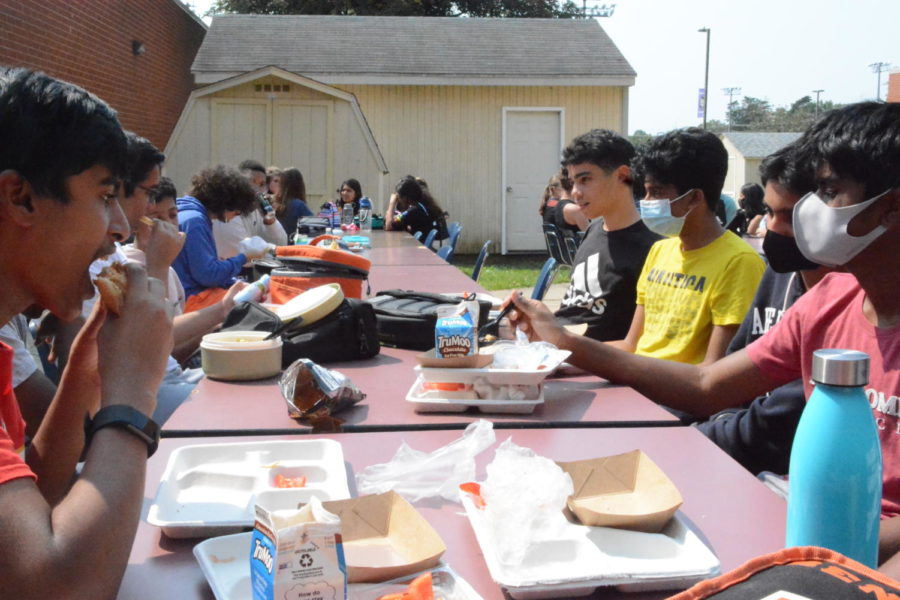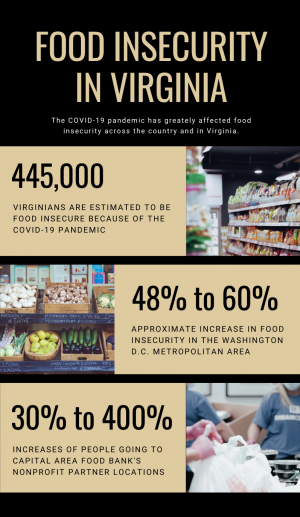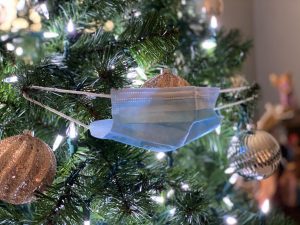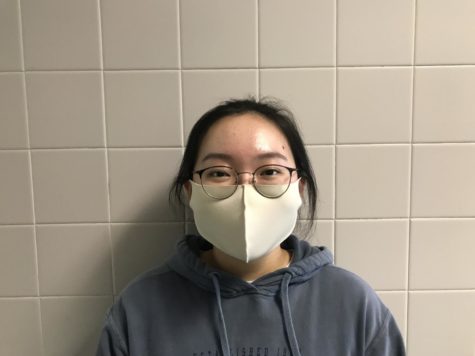Staff Editorial: Efforts needed to make lunch safe for everyone
Sophomore Clara Chambers eats lunch in the hallway outside the cafeteria like other students on Sept. 16.
October 10, 2021
More than 700 unmasked students are eating lunch… not six feet apart.
Since lunch in the cafeteria looks almost the same as it did before the pandemic, certain students feel anxious about their safety when eating in there—and for good reason. Students are packed side-by-side, moving around and reaching over tables without their masks on. The enclosed space offers little air ventilation, and while Fairfax County Public Schools (FCPS) has made COVID-19 vaccinations mandatory for teachers, students are not required to be vaccinated. Free lunches provided by FCPS also encourage students to buy lunch in the cafeteria and eat in there as well, fueling overcrowding.
Alternative lunch spaces offered to mitigate crowding are not completely safe and accessible for everyone. Although chairs and tables at Door 11 are outdoors, this eating space is not compliant with the Centers for Disease Control and Prevention guidelines since students are not six feet apart. Also, eating lunch in a teachers’ classroom can be difficult, since teachers are guaranteed a 30-minute lunch break without students in their rooms.
In a Chantilly News Instagram poll taken on Sept. 8, 55 out of 97 students reported feeling uncomfortable eating in the cafeteria, and 22 out of 69 students reported having nowhere else to eat, thus not eating at all during the whole school day. For senior Keerthi Athauda, eating in the cafeteria is like a sensory overload, and during the pandemic, it’s unnerving for him—and many other students feel the same. FCPS parents have also expressed concern and confusion after hearing about the lunch situation from their children, according to WUSA 9.
Every student has the right to feel safe at school. While this statement, emphasized strongly at the beginning of every school year by FCPS teachers and administrators, is mostly directed towards bullying and harassment in school, it also applies to the pandemic.
No student should have to choose between risking their health and going hungry for a day. No student should feel like they are asking too much or being too “afraid” of COVID-19 just to have a safe space to eat. No student should feel unsafe in any way at school, especially during a time where potential crisis looms over all of us.
Fortunately, administrators are working to offer more accommodations for students during lunch. According to assistant principal Zachary Winfrey, a large tent and extra tables and chairs have been ordered to hold more students at doors seven, nine and 11, and outdoor heating may be installed once temperatures go down.
Administrators also consider placing small tables and chairs in the hallway from the auditorium to the gymnasium and in the gym lobby. However, orders for furniture are backed up, and even when more lunch spaces are created, it will be a while before every student can feel completely safe from COVID-19.
Students must be more considerate of others when in the cafeteria by keeping their masks on when they’re not eating, not moving around tables and cleaning up before they leave. If teachers try to allow students to eat in their classrooms and provide hall passes for students who need to buy lunch or want to go to the library right after eating, more students can eat safely.
We are still in a pandemic. Even though it sometimes feels like everything has gone “back to normal,” the coronavirus hasn’t magically disappeared, nor have its consequences. Everybody must understand that people have different levels of cautiousness about the coronavirus, and we must respect others’ opinions and sensitivities regarding it. Only then will each individual feel safe when eating at school.


